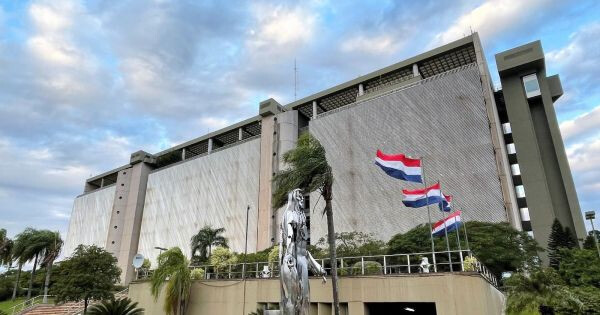
The Central Bank of Paraguay (BCP) announced that it has revised its 2025 gross domestic product (GDP) growth forecast upwards from the previous 3.8% to 4.0%. According to BCP Chief Economist César Yunis, stronger-than-expected economic activity in early 2025 is the main driver behind this positive revision.
The BCP comprehensively reviewed the growth outlook for each economic sector, resulting in a significant upward revision of the service sector's growth forecast from 3.4% to 4.0%. This is analyzed to be due to the robust growth in commerce, financial intermediation, household services, and the hospitality industry. Additionally, within the secondary sector, the construction industry's growth forecast was also raised from 4.3% to 4.9% due to increased construction activity in both the public and private sectors. On the other hand, the growth outlook for the electricity, water, and manufacturing sectors remained at their previous levels.
For the primary sector, a key industry, the growth forecast for the agricultural sector was revised downwards from the initial 2.0% to 0.6%. This was primarily attributed to a decrease in soybean production due to adverse weather conditions. However, there was a positive development. Bolstered by strong external demand, the growth forecast for the livestock sector was significantly increased from the previous 0.3% to 2.3%.
The Paraguayan GDP growth rate, excluding agriculture and binational entities, is projected to be 4.0%, a 0.4 percentage point increase from the previous forecast. Meanwhile, the inflation rate is projected to be 3.8%, slightly above the target of 3.5%, due to temporary increases in the prices of fruits, vegetables, and durable goods. However, core inflation remains stable, and the monetary policy rate has been maintained at the current 6%.
Local analysts in Paraguay anticipate that the improved economic outlook for Argentina (revised upwards from 4.0% to 4.5%) will drive an increase in Paraguayan exports, partially offsetting the negative impact of the downwardly revised global growth forecast (from 3.1% to 2.9%) amidst trade tensions. However, the soybean industry is expected to underperform compared to overall economic growth due to the impact of adverse weather, which is the main factor behind the downward revision of the agricultural sector's growth forecast. The growth rate of exports is also expected to slow to 3.0%, a 5 percentage point decrease from the previous forecast, due to reduced grain shipments.
Despite a 4.3% year-on-year decrease in the agricultural sector in the fourth quarter of 2024, the overall GDP growth rate for 2024 reached 2.8%, driven by increased production of soybeans, wheat, rice, cotton, and yerba mate. However, corn production saw a decline.
Meanwhile, reflecting solid domestic demand, the growth forecast for private consumption was revised upwards from 3.6% to 4.3%, and the growth forecast for gross fixed capital formation was also raised from 3.9% to 4.5%.
Thus, despite the challenges in the agricultural sector, the robust growth in the non-agricultural sectors and consumption is driving the optimistic outlook for the Paraguayan economy. However, the fact that the inflation rate slightly exceeds the target is pointed out as a factor to consider in future economic policy management. Earlier, Economy Minister Carlos Fernández Valdovinos also projected in a recent interview that the Paraguayan economy would grow by 4% in 2025. The Paraguayan Central Bank's upward revision of the growth forecast supports this positive sentiment and raises expectations for the continued growth potential of the Paraguayan economy.
[Copyright (c) Global Economic Times. All Rights Reserved.]






























